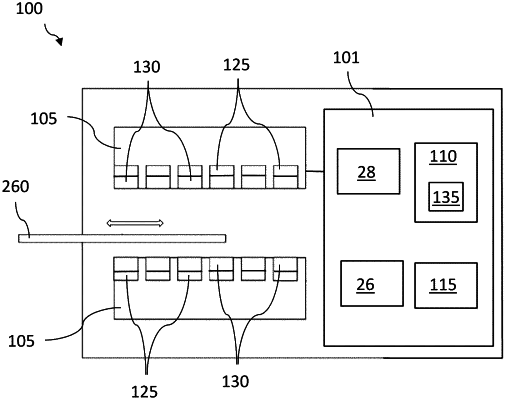| CPC G06T 11/003 (2013.01) [A61B 6/037 (2013.01); G06T 11/006 (2013.01); G16H 30/40 (2018.01)] | 11 Claims |

|
1. A method for monitoring a positron emission tomography (PET) scanner performance during a continuous-bed-motion (CBM) acquisition using an axially short phantom to cover long axial PET scanner's field of view, wherein the PET scanner has a patient bed that moves a patient in an axial motion through the PET scanner during the CBM acquisition, the method comprising:
(a) generating time-of-flight (TOF) data of positron annihilation activity in the axially short phantom mounted on the patient bed during the CBM acquisition, while accounting for the axial motion of the patient bed during the CBM acquisition, as a first data set that comprises CBM data y with spatial projection index j=(ρ,θ,ζ), wherein ρ is transaxial radial coordinate, θ is azimuthal coordinate, and TOF bin index T is modeled by combining true events modeled projection p from emission object f, defined by voxel index k, corrected for scanner efficiency through a normalization array n for attenuation by α, and scatter estimation S, corrected for scanner efficiency, and mean random data r according to:
 wherein C is the geometrical projection system matrix;
wherein ε is the crystal efficiency; and
wherein coordinate ζ is the CBM data normalization;
(b) generating a complementary data set by integrating the TOF data over the axial motion of the patient bed during the CBM acquisition, wherein the complementary data set is modeled by the equation:
 wherein z is axial plane coordinate, B is a blurring operator defined as
 and Y ρθz, a motion blurring operator, is calculated by:
 wherein t′acq is CBM acquisition time; and
(c) simultaneously reconstructing the positron annihilation activity and crystal efficiency normalization coefficient from the complementary data set.
|